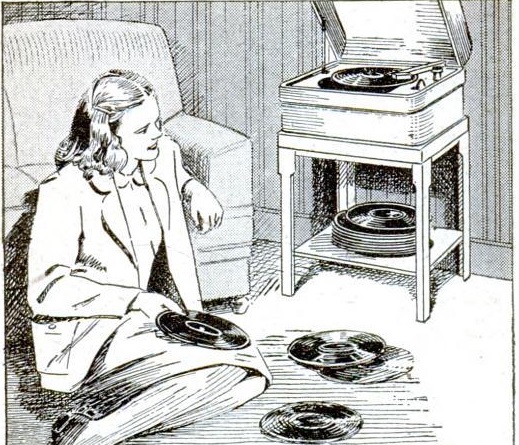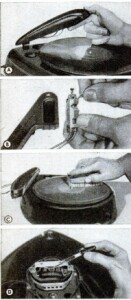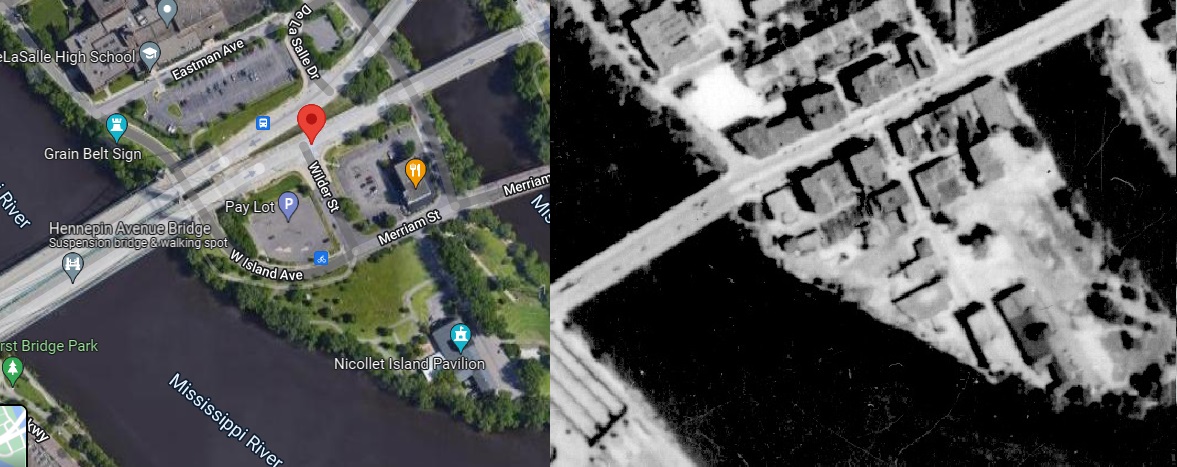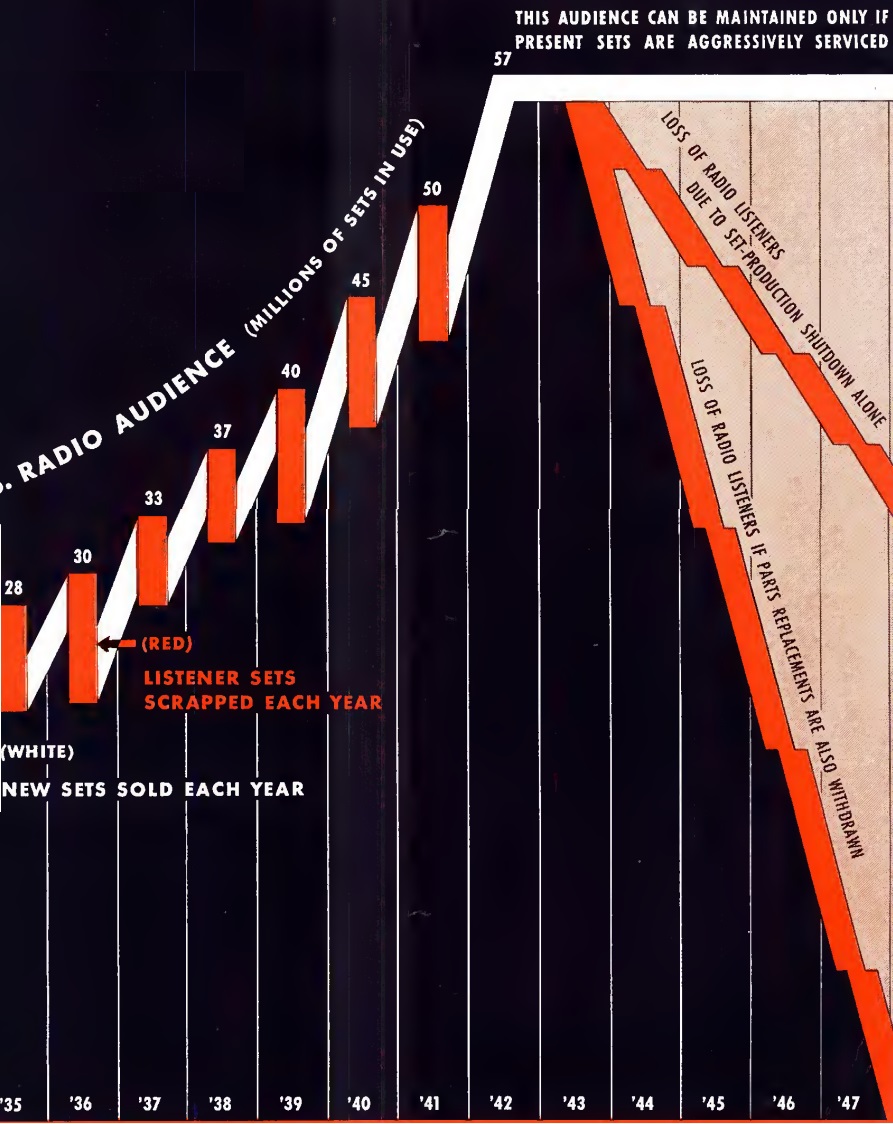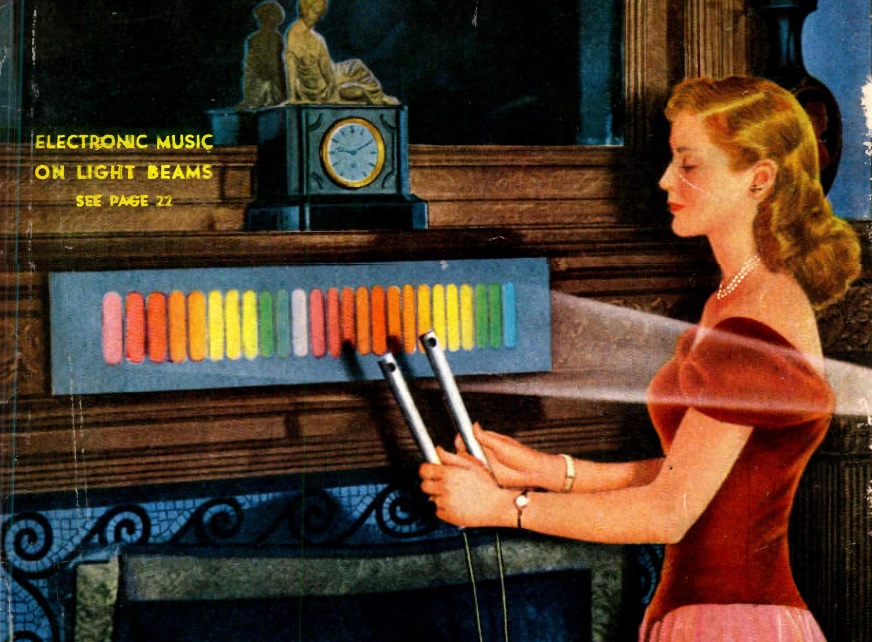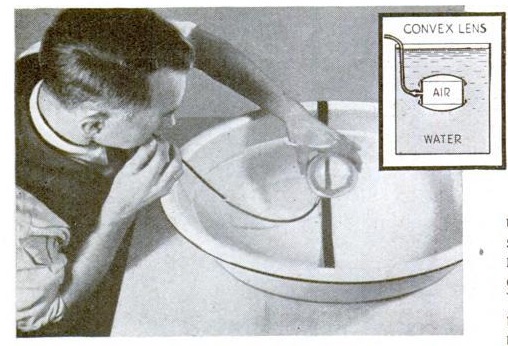 For the student looking for a simple science fair project that will mystify the teacher, you’ve come to the right place. When the teacher asks what scientific question(s) your project will demonstrate, you can propose the following:
For the student looking for a simple science fair project that will mystify the teacher, you’ve come to the right place. When the teacher asks what scientific question(s) your project will demonstrate, you can propose the following:
Is it possible to construct a convex lens that will have a magnification factor of less than one? Is it possible to construct a concave lens that will have a magnification factor of more than one?
 To put it another way, a convex lens (such as the one on the left) makes things look bigger, and a concave lens (shown on the right) makes things look smaller. But your simple experiment will show that it’s possible to make a convex lens that makes things look smaller, and a concave lens that makes them look smaller.
To put it another way, a convex lens (such as the one on the left) makes things look bigger, and a concave lens (shown on the right) makes things look smaller. But your simple experiment will show that it’s possible to make a convex lens that makes things look smaller, and a concave lens that makes them look smaller.
A lens is usually made out of a substance such as glass, which is denser than air. This means that light waves travel more slowly through the lens. But there’s no reason why you have to use glass and air. In your case, you will use air for the lens, and water instead of the air. This means that the speed of light is faster through the lens, rather than slower, as we usually think of lenses.
The layout for the lens is quite simple, as you can see from the illustrations. You need a small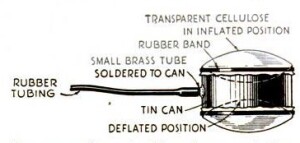 can, covered on each side with a piece of cellophane. Any type of clear flexible plastic should work fine. The easiest option is probably cling wrap. You’ll need to cut a hole in the side of the can, and insert a flexible rubber or plastic tube. The connection needs to be air tight. There are probably other ways to make the connection, but the easiest would probably be to use a small brass tube, and solder it to the can. (You’ll need a soldering iron, which probably costs a lot less than you would expect.) Slide the plastic tube over the brass, and make sure the connection is water tight. The construction details are shown at the right.
can, covered on each side with a piece of cellophane. Any type of clear flexible plastic should work fine. The easiest option is probably cling wrap. You’ll need to cut a hole in the side of the can, and insert a flexible rubber or plastic tube. The connection needs to be air tight. There are probably other ways to make the connection, but the easiest would probably be to use a small brass tube, and solder it to the can. (You’ll need a soldering iron, which probably costs a lot less than you would expect.) Slide the plastic tube over the brass, and make sure the connection is water tight. The construction details are shown at the right.
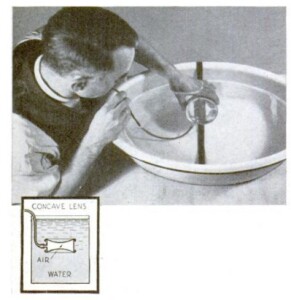 If you blow into the tube, as shown in the illustration above, then the can becomes a convex lens, made out of air. And if you suck air out of the tube, as shown at the left, it becomes a concave lens. Place it in a container of water, and you can watch how a black stripe at the bottom of the container is magnified or made smaller, but the opposite of how it would work with a glass lens in air.
If you blow into the tube, as shown in the illustration above, then the can becomes a convex lens, made out of air. And if you suck air out of the tube, as shown at the left, it becomes a concave lens. Place it in a container of water, and you can watch how a black stripe at the bottom of the container is magnified or made smaller, but the opposite of how it would work with a glass lens in air.
Your teacher will have to concede that there’s nothing in the definition of “lens” that requires it to be made out of glass. He or she will have little choice but to award you the blue ribbon for answering your questions in the affirmative.
The project appeared 85 years ago this month in the April 1937 issue of Popular Science.
Some links on this page are affiliate links, meaning that this site earns a small commission if you make a purchase after clicking the link.

